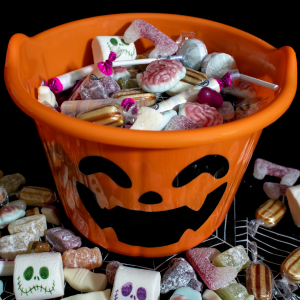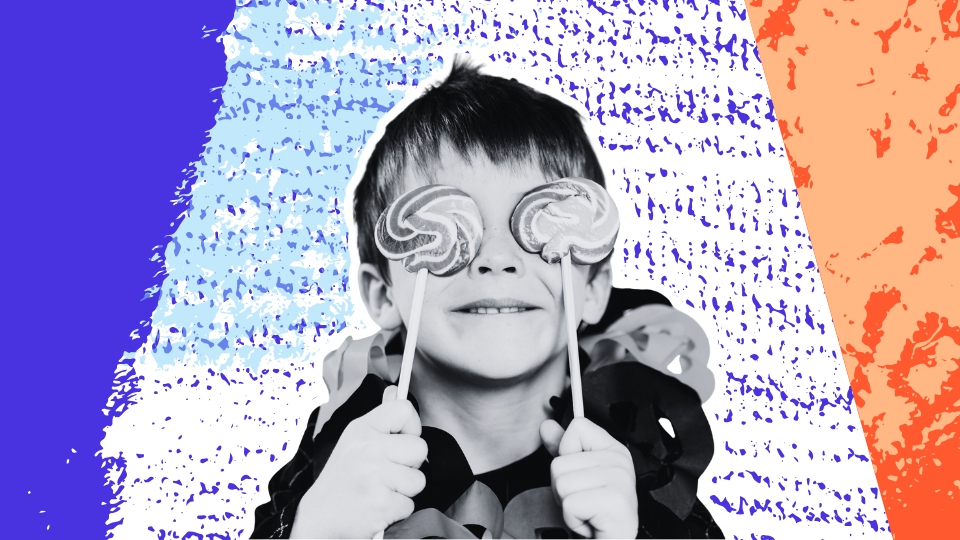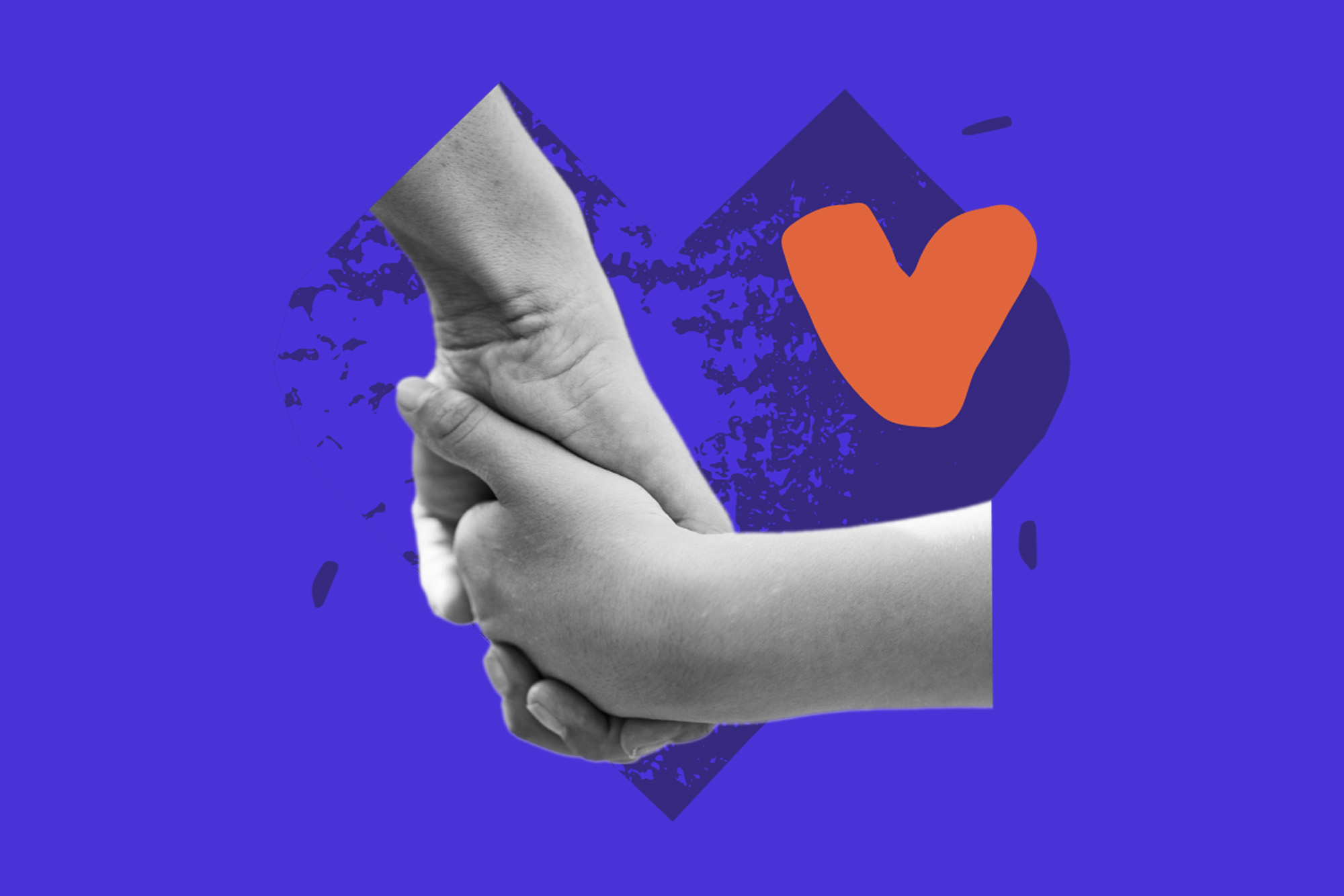4 Healthier Ways to Talk to Kids About Halloween Candy
Published October 7, 2022

You’re days away from trick-or-treating, but already you’re bracing for the annual Halloween candy chaos.
Mountains of treats will soon show up on your doorstep, and along with them, the question every parent faces: How do I handle all this candy without the stress, guilt, or sugar battles?
Here’s the good news: what you say to your kids about candy matters more than how much they eat. WithAll’s What to Say initiative helps parents and caregivers prevent food and body shame by changing the language we use. Research shows that when adults talk about food in healthy, neutral ways, kids build confidence, resilience, and trust in their bodies.
So what can you say about candy this season? Here are four insights from this free Halloween Guide for parents and caregivers. We hope these tips make this sugar-packed time of year less spooky for kids and caregivers alike.

1. Pause Before You Talk About Food
When the candy starts piling up, pause before reacting. What message do you want your words to send?
Aim for language that focuses on health and well-being, not size, weight, or guilt.
Kids learn what matters by hearing what we emphasize. When you talk about how food helps them feel good rather than how it affects appearance, you’re protecting them from the pressures of diet culture.
What to Say Instead:
❌ “You don’t need that much sugar.”
✅ “Candy is fun to enjoy sometimes, and we’ll save some for later so you can enjoy it again.”
This small shift helps kids connect food to enjoyment and self-trust, not restriction.
2. Set Limits Without Labeling Foods as “Good” or “Bad”
You’re still the parent, and setting boundaries is healthy. But try to avoid moralizing foods. Saying candy is “bad” or veggies are “good” can make kids feel shame or pride based on what they eat.
Instead, guide with structure and balance. For example, let them pick a few pieces of candy after dinner and talk about how different foods help our bodies in different ways.
Learn more about this approach in our 7 Guiding Principles for What to Say.
What to Say Instead:
❌ “You’ve had enough junk food.”
✅ “Let’s enjoy a few pieces now and keep the rest for tomorrow.”
By removing the “good vs. bad” labels, you help your child build a calm, curious relationship with food.

3. Watch Your Own Self-Talk
Kids notice everything, especially how we talk about ourselves.
Even light-hearted comments like “I shouldn’t have eaten that” can make kids internalize guilt about food or body image.
Try to model the same compassion you want them to have for themselves. Speak kindly about your body and choices.
What to Say Instead:
❌ “I ate too much, I’m going to gain weight.”
✅ “That was delicious! My body feels full, so I’ll stop here.”
By showing that it’s okay to listen to your body and enjoy food without shame, you teach kids to do the same.
4. Keep Food and Exercise Separate
Movement is great for mental and physical health, but it should never be a punishment or a way to “earn” food.
Avoid comments that link candy to needing to burn it off or exercise to deserve it.
Encourage joyful, natural movement instead. Ask your kids what activities feel fun, like dancing, biking, or a quick round of tag after dinner, and focus on how movement makes them feel.
What to Say Instead:
❌ “Let’s go for a walk to burn off that candy.”
✅ “Let’s move our bodies, it always helps me feel happy and strong.”
Keep the focus on energy, connection, and fun, not calories or control.
Decades of research tells us that what adults say to children about food, body, and exercise hugely impacts how a child feels about these fundamental, life-long topics.
Quick Language Swaps for Halloween
Here are a few simple phrases to keep handy during Halloween:
-
Instead of “Candy is bad for you,” say “Candy is one of many foods we can enjoy.”
-
Instead of “You don’t need that much sugar,” say “Let’s save some for later so you can enjoy it again.”
-
Instead of “I shouldn’t eat this,” say “This looks delicious, I’m going to enjoy it.”
-
Instead of “You’ll gain weight if you eat too much,” say “Our bodies need lots of different foods to stay strong and energized.”
-
Instead of “Let’s work this off tomorrow,” say “Let’s move because it feels good and helps us sleep better.”
Get our Free Halloween Guide
WithAll is committed to helping children and their families navigate healthier discussions about food and body. That’s why our What to Say initiative created this free, downloadable Halloween Guide featuring these tips, as well as research-backed insights and advice from parenting and nutrition experts who have been in your shoes.
And remember: these principles apply beyond just Halloween! Whether it’s about candy, cake, sugar, or any other food item that can be enjoyed in moderation, the way adults choose to talk to kids or around kids has a real impact – each and every day.
Want more tips on how to help kids feel good in their bodies and with food? Sign up for Tip of the Month for free, practical guidance delivered right to your inbox every month.
